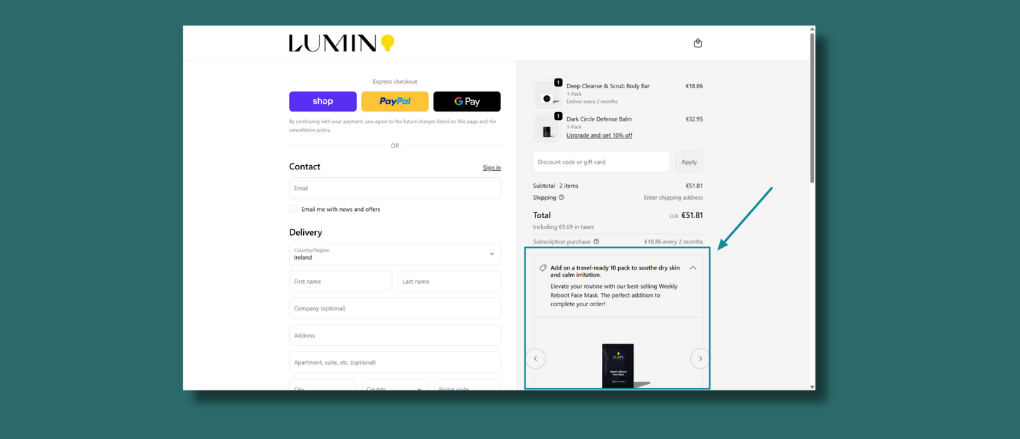What is an Omnichannel Ecommerce Strategy?

Customers are shopping across diverse digital channels as well as brick-and-mortar stores. To meet their needs at every touchpoint, you need to do more than offer multiple channels. You have to deliver fully interconnected experiences.
This is where developing an omnichannel ecommerce experience comes in.
Omnichannel ecommerce helps customers have a smooth and connected experience, whether they’re shopping on social media, your website, your app, or in-store.
In this guide, we’ll look at the many benefits of using an omnichannel ecommerce plan. We’ll also explain how to build a plan that helps your business grow.
What is omnichannel ecommerce?
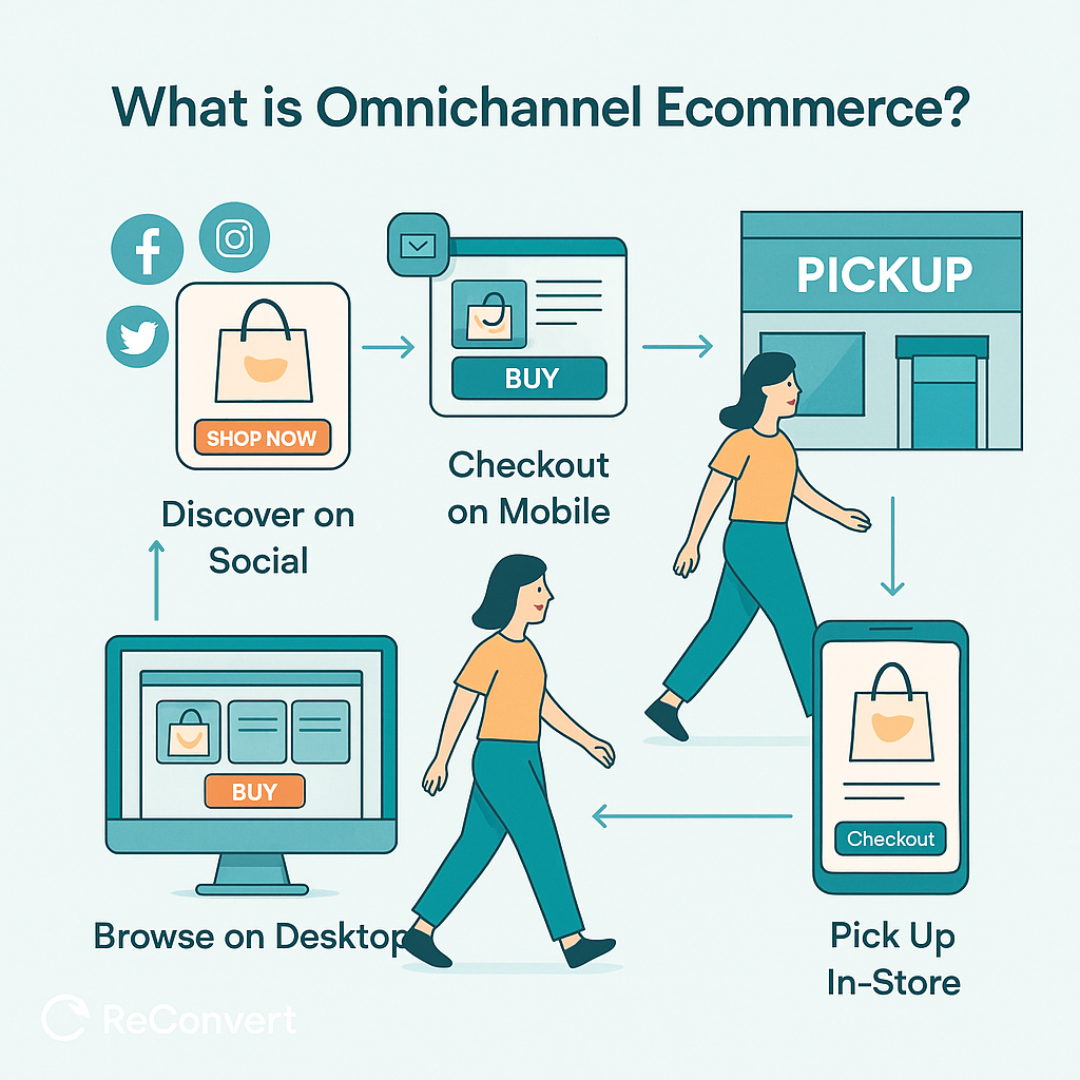
Omnichannel ecommerce is a way to bring together your marketing, sales, and customer service so everything works as one.
It connects online and in-store shopping and links all the places customers interact with your business online. This includes websites, ecommerce marketplaces, mobile apps, social media, and email.
This means that customers can enjoy a consistent, frictionless experience while:
- Discovering your product on social media
- Shopping on your website using their laptop
- Switching to your mobile app to complete a purchase
- Collecting their item in your brick-and-mortar store
Multichannel ecommerce vs. omnichannel ecommerce
Omnichannel and multichannel ecommerce share one key similarity. They both use multiple channels to reach and engage with customers. But how these channels are used is entirely different.
A multichannel ecommerce strategy maximizes reach by offering multiple channels to customers. This includes:
- Websites
- Physical stores
- Social media
- Phone
However, all of these channels operate in isolation. So, there’s no integration, communication, or data sharing between channels. This results in fragmented, inconsistent experiences.
An omnichannel ecommerce strategy creates consistent, holistic experiences across multiple channels. It does this by integrating touchpoints, platforms, and data.
It harmonizes and synchronizes everything from:
- Branding
- Messaging
- Pricing
- Overall shopping experience
This allows customers to switch seamlessly between channels.
4 core components of an omnichannel ecommerce strategy
Omnichannel ecommerce can be a bit confusing. But once you understand the four key components that the strategy is built on, it’s easy to see how it all comes together. So, let’s get into it.
1. Unified ecommerce branding and messaging
In omnichannel ecommerce, every touchpoint your customers interact with has consistent, cohesive branding. This includes your:
- Logos
- Color scheme
- Messaging
- Tone of voice
- Visuals
- Overall shopping experience
Uniform branding makes you instantly recognizable across touchpoints. It also makes you synonymous with your key brand pillars. These are your purpose, personality, values, positioning, and promises.
In turn, you increase your brand’s authenticity and trustworthiness. These are essential for driving conversions and loyalty.
Not convinced? 46% of customers will pay more for brands they trust.
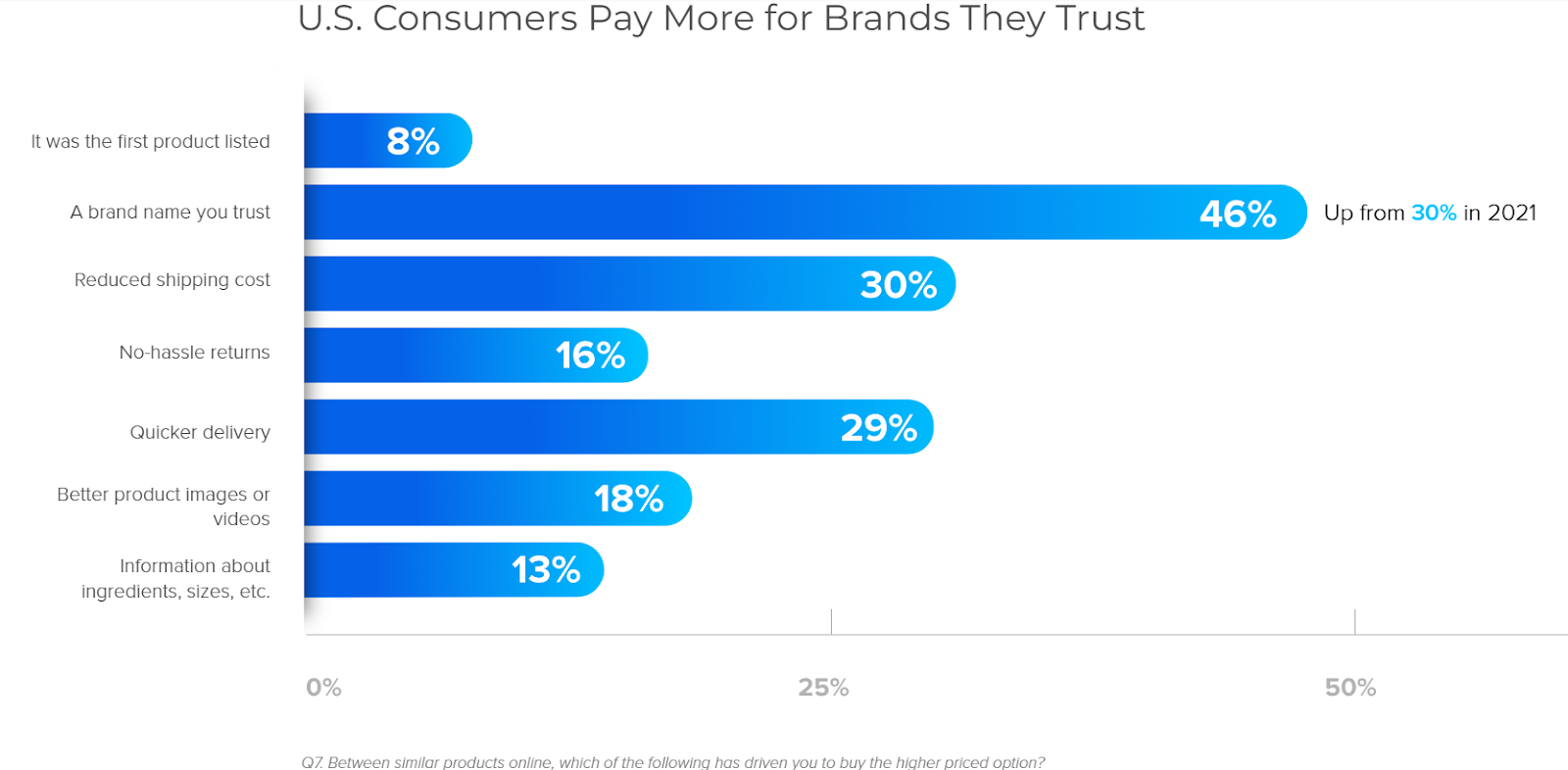
2. Cross-platform customer journey integration
Your customer journey encompasses many different platforms. These include:
- Social media
- Mobile apps
- Websites
- Your contact center
It isn’t a straightforward journey, as customers tend to bounce back and forth between channels.
Omnichannel ecommerce integrates customer platforms and critical tools like your CRM and ERP. This means customers get the same experience at every step. This includes learning about your brand and becoming loyal fans.
For example, they can switch between channels and receive the same:
- Product information
- Pricing details
- Personalized messages
It even enables features like:
- Cart syncing across devices
- Personalized ad retargeting
- Click-and-collect fulfillment options
Cross-platform customer journey integration also extends to customer service. An omnichannel contact center unifies all of your customer service channels. These include phone, SMS, email, and live chat.
This means that customers can switch between channels without having to repeat their issues. This facilitates streamlined service experiences.
3. Real-time inventory and order synchronization
Omnichannel ecommerce strategies rely on key systems like:
- Enterprise Resource Planning (ERP)
- Inventory management systems
- Order management systems (OMS)
These systems maximize stock visibility. They do this by enabling real-time inventory and order tracking across platforms.
So, no matter where your customers shop, they’ll be able to access the most up-to-date information about:
- Pricing
- Product availability
- Orders
You’ll also gain 360-degree visibility into your inventory levels. This drives optimized stock management and reduces stockouts and overstocking.
4. Data sharing across channels and departments
Siloed data creates disjointed experiences. According to Salesforce, 79% of customers expect interactions to be consistent across departments. But 55% of people still feel like they’re talking to separate teams instead of one connected company.
Omnichannel strategies fix this by putting all data in one place. This makes it easier for teams to use the same information. When data is shared well, businesses can quickly collect and study it from different channels to learn things like:
- Customer preferences
- Behaviors
- Trends
When all your teams share the same data, they can work together to give each customer a smooth and personal experience. They can view every past brand interaction to tailor:
- Ads
- Marketing content
- Customer service
How omnichannel ecommerce drives business growth
Omnichannel ecommerce drives:
- Conversions
- Sales
- Loyalty
This enriches customer insights.
Let’s deep dive into exactly how omnichannel ecommerce fuels business growth.
1. Elevates customer experience and loyalty
35% of an ecommerce store's revenue is created by the top 5% of customers. These are customers who make repeat purchases and recommend your brand to others.
Omnichannel experiences curate these loyal customers by meeting their needs for:
- Consistency
- Personalization
- Convenience
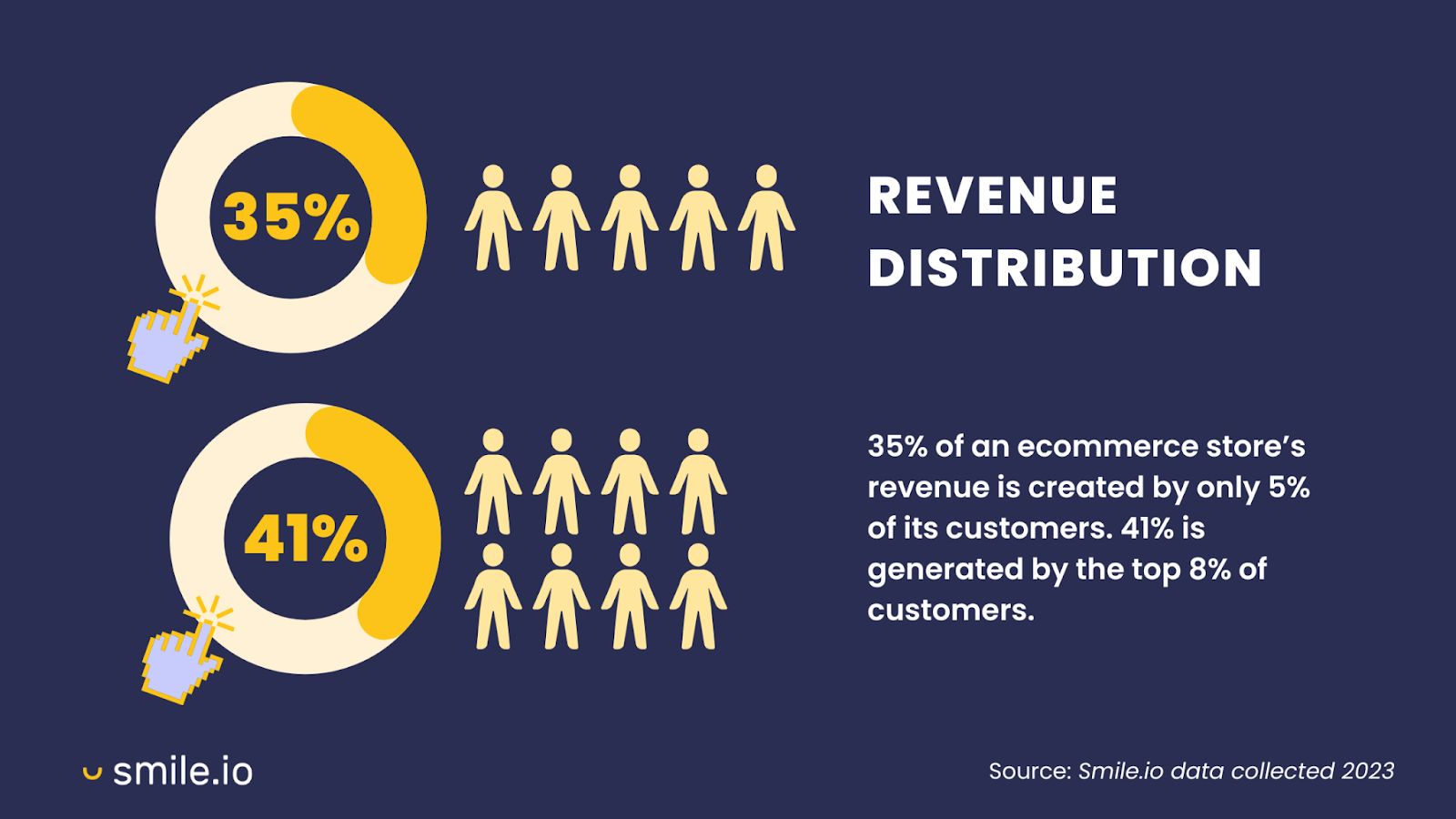
A loyalty-driving omnichannel experience may look something like this:
- You attract a customer with a targeted ad on their favorite social media platform.
- They go straight to your website and sign up for your email newsletter after looking at your products.
- You then send them emails with special discounts and product ideas based on what they’ve looked at before.
- They buy something using their favorite device, helped by a synced shopping cart and easy payment options across channels.
- They receive reward points through your cross-channel loyalty program.
- You send messages by email or app alert after a purchase, like shipping updates or when items are back in stock.
Not to mention that if customers need support, they can receive exceptional services via:
- Phone
- Live chat
- SMS through your omnichannel contact center
2. Increases reach and market penetration
Omnichannel ecommerce opens the door to vast markets of new potential buyers.
If you only use one platform to connect with customers, you limit yourself to a small demographic.
But if you create a presence on various platforms, you can enhance your brand’s visibility across the digital landscape. This includes using platforms like TikTok, Instagram, Etsy, and Amazon.
For example, age is a key factor that influences which channels customers use to:
- Discover brands
- Make purchases
- Receive support
Take social media, for example. Gen Z prefers TikTok and Instagram. Millennials prefer YouTube. Gen X and Boomers usually choose Facebook.
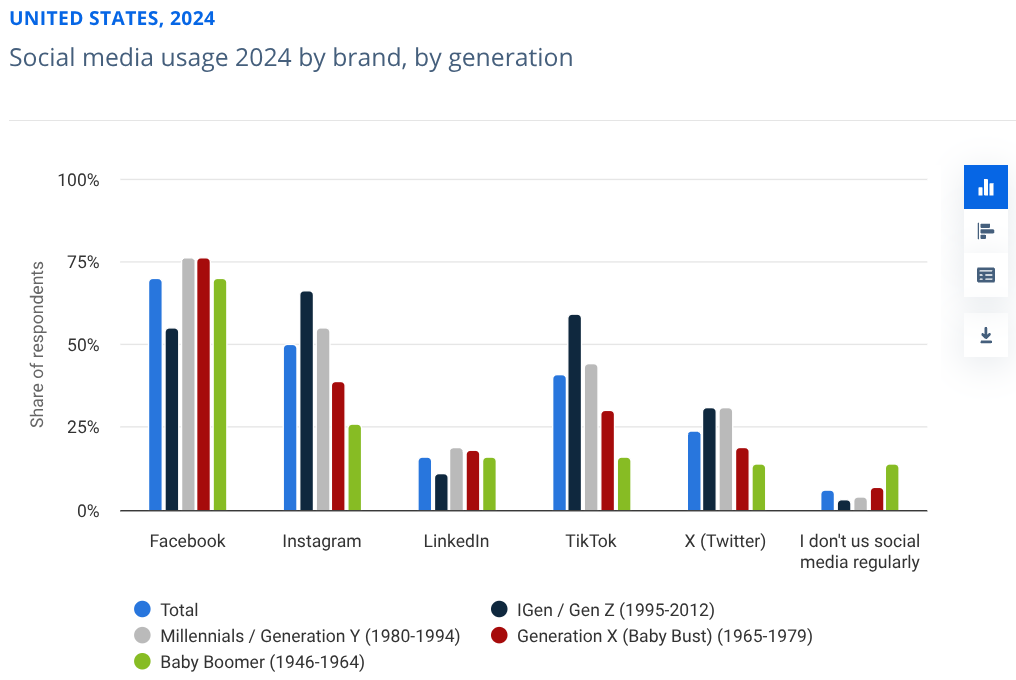
The same goes for customer service preferences. Younger generations prefer live chat and social media. Older generations are more comfortable with the telephone and email.
By expanding your channels, you make your brand more accessible to your target audience. This boosts your reach and unlocks entry into new markets.
3. Drives sales and increases revenue
McKinsey research found that customers who shop across platforms are 70% more likely to make purchases. They also spend 34% more than people who exclusively shop in store.
But what is it about omnichannel ecommerce that makes it so profitable?
Firstly, the more shopping channels you have, the more customers you can reach. In turn, you can generate more sales. But it goes even deeper than that. When you connect all your channels, customers can shop their way, easily and without trouble.
Customers can buy online and collect in store. Alternatively, they can use your mobile app to scan items while they’re in store and view:
- Customer reviews
- Alternative products
- Tutorial videos
- Reward points
This encourages easy, confident purchases.
Plus, omnichannel unlocks better upselling opportunities that ramp up sales. You can use integrated ecommerce upselling tools to make tailored product recommendations.
These tools include ReConvert. Tailored recommendations are based on past purchases or recently browsed items.
4. Improves conversion rates across touchpoints
When all your channels work together, it’s easier to follow each customer’s journey and send them the right message at the right time to help them buy.
Let’s say that a customer abandons their online cart. Here, you can reel them back in by sending encouraging reminders via email or push notifications. Follow up with an exclusive discount or tailored product recommendations to incentivize purchases.
Overall, omnichannel ecommerce reduces cart abandonments by creating frictionless checkout experiences across touchpoints.
Carts can be synced across platforms. Cart notifications can follow customers from web to mobile. Customer service can be integrated into checkout pages to deliver speedy issue resolutions.
5. Boosts customer insights and targeting
Unified data delivers rich customer insights. When you better understand what your customers like, you can create marketing messages that speak directly to them. This helps more people stay interested and make purchases.
For example, if you know what a customer recently looked at or liked, you can send them an email with content they’ll probably enjoy.
Alternatively, retarget them with a tailored ad on social media based on a product page they visited.
You can also analyze recent purchases to send:
- Personalized product recommendations
- Restock updates
- Exclusive discounts and promotions
This has the potential to significantly boost repeat sales. Together, ReConvert users made an extra $2.42 billion in sales from upselling after a purchase.
5 Key steps to building an effective omnichannel strategy
Omnichannel strategies are much more involved than multichannel strategies. So, you’ll need a clear, detailed plan of action. By following the steps below, you can build and use a strong omnichannel plan that sets you up for success.
1. Set realistic and achievable goals
To create an omnichannel plan that helps your business grow, you need to set clear goals to track your progress and results.
Try using the SMART framework. This involves setting goals that are specific, measurable, achievable, relevant, and time-based.
Instead of setting a goal like “Increase customer loyalty.,” a SMART goal would be something like “Increase repeat purchases by 20% in the next year.” Make sure to determine quantifiable metrics for each objective.
2. Audit your current channels and identify gaps
Next up, create a customer journey map that outlines all the channels you currently use. Audit these channels to determine the role each touchpoint plays in your customer journey. Use cross-channel analytics and customer feedback to identify gaps and inconsistencies.
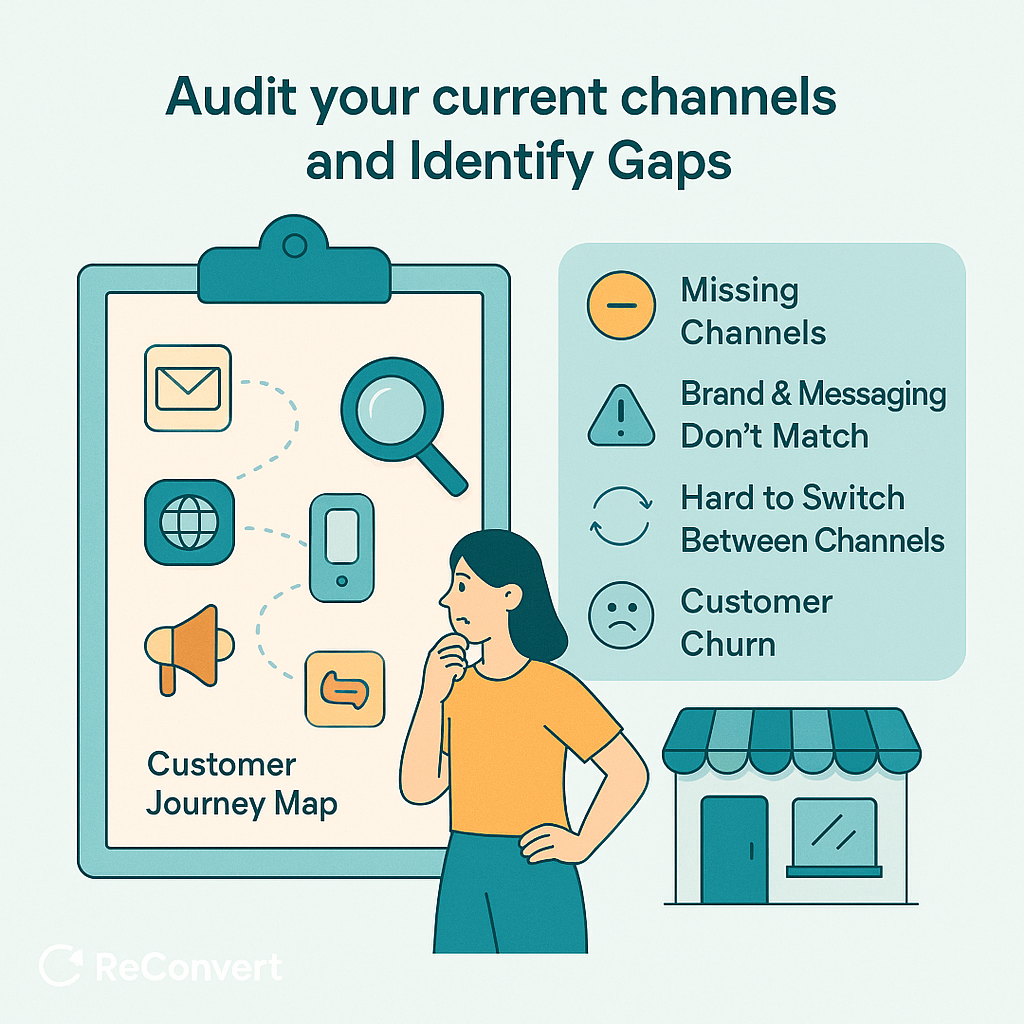
Common gaps to look out for include:
- Missing channels: Do you have a presence on all of the channels that your customers use? Is your customer journey missing important channels, making the experience feel broken?
- Branding and messaging that don’t match: Does your brand look and sound the same on all channels?
- Hard to switch between channels: Do customers face problems when moving from one channel to another, like carts not syncing or missing reward points?
- Customer churn: Which channels experience the most churn and why?
3. Centralize customer data to break down silos
Now, it’s time to consolidate your customer data into a single system to enrich data visibility and accelerate access to insights. To do this, you’ll need a customer relationship management (CRM) system.
A CRM system collects and stores customer data from across your:
- Marketing
- Sales
- Service platforms
This allows you to create comprehensive customer profiles.
Gain instant visibility into which marketing campaigns every customer interacts with across things like:
- Social media
- Search engines
See which sales channels they use to make purchases. Also, find out:
- How frequently they purchase
- Which deals they use
- Which marketing campaign drove the purchase
Access past conversations with customer service across your different channels - all in one place.
Armed with unified data, you can personalize experiences across channels by targeting customers with:
- Tailored marketing campaigns
- Recommendations
- Upsells
- Customer service
4. Integrate tools and technology platforms
One of the most important steps is linking your online store with the tools you use.
This helps you keep customer info, products, shipping, and marketing all working together so that shoppers have a smooth experience on every platform.
Use APIs and plugins to integrate your ecommerce platform with tools like:
- Inventory management apps
- Order processing and order fulfillment
- CRMs
- ERPs
- Payment gateways
- Marketing automation platforms
- Point-of-sale (POS) systems
Delivering omnichannel customer support also requires integration. Here, you’ll need a VoIP-based phone system.
What is VoIP? It stands for Voice over Internet Protocol. It lets you make phone calls over an internet connection. VoIP providers enable users to connect easily with tools like CRMs, email, and helpdesk software, either directly or through APIs.
This helps agents support customers better by giving them one place to see customer info and making it easy to talk across different channels.
5. Develop consistent brand guidelines for every channel
It takes around five to seven impressions for customers to remember your brand. If your brand looks or sounds different on each channel, people may not trust it, and that can hurt your sales and growth.
To build a strong and real online brand, create clear rules for how your brand should look and share them with your team.
The best way to do this is to create a brand book. This is an internal knowledge document that details the elements that make up your unique brand identity.
Key elements to specify in your brand guidelines include:
- Logos
- Color schemes and palettes
- Design elements like imagery and animations
- Typography
- Communication style and tone of voice
- Brand missions, visions, and values
By using the same look and message everywhere, you can :
- Help people recognize your brand
- Build trust
- Make sure customers get the same experience each time
Omnichannel ecommerce examples
What is an example of an omnichannel strategy in action? Here are two standout examples from brands that are getting it right:
1. Barnes & Noble
Barnes & Noble started as a physical bookstore but improved the way customers shop by adding a mobile app, mobile site, and desktop website.
Online, customers can see what’s in stock and check order and delivery info. They can also buy from any device and pick up in-store, with their shopping cart and order details staying the same across all channels.
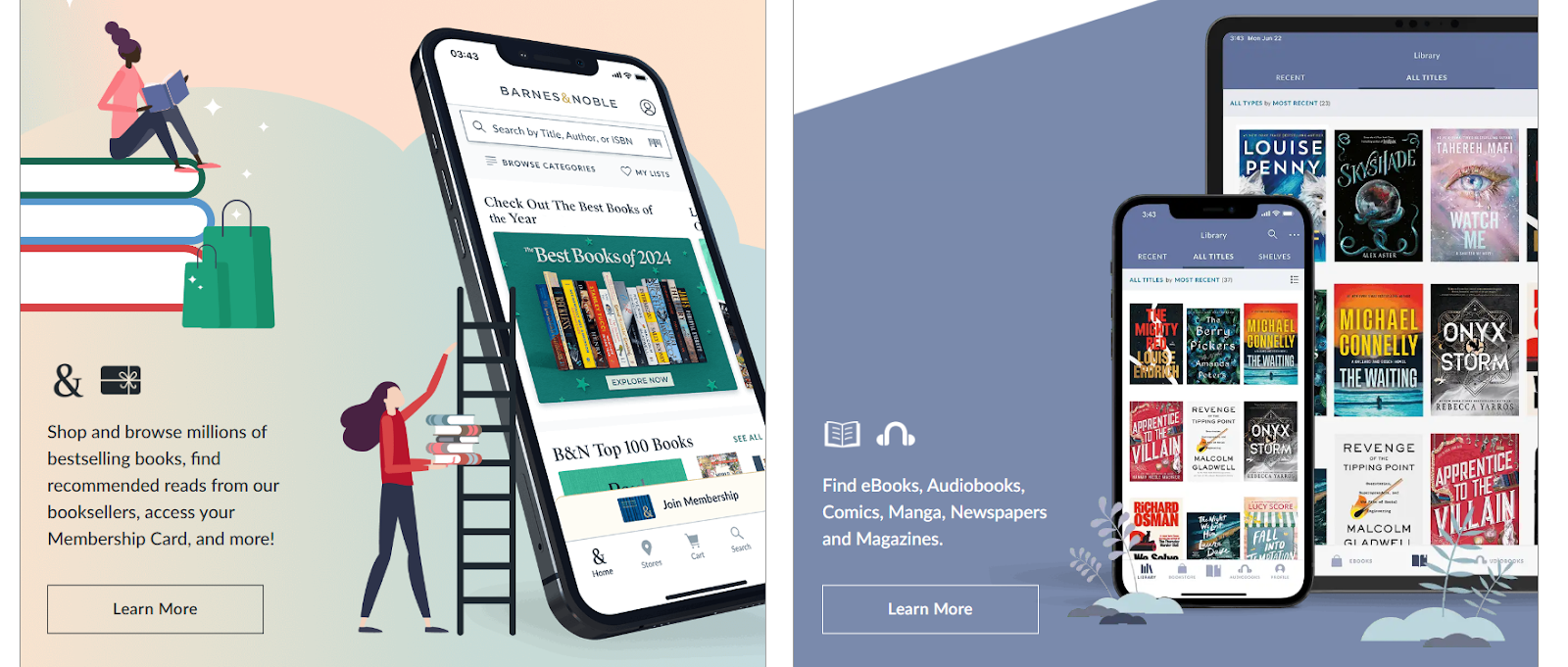
The brand has also capitalized on the BookTok trend. When customers find books on TikTok, they can be sent to Barnes & Noble’s special BookTok pages on the website or app, making it easy for them to keep shopping.
Barnes & Noble’s personalized recommendations are on point, thanks to CRM integrations.
2. Starbucks
Starbucks is known for its coffee shops, but it also uses online tools to support shopping and customer rewards.
The Starbucks card, available as both a real card and a digital one, lets customers earn points every time they buy something.
Customers can order and pay for their drinks ahead of time, using different devices without any problems. Because Starbucks connects its app and payment systems to its customer database, it can give personalized tips and local suggestions.

Screenshot taken from starbucks.com
Implement an omnichannel ecommerce strategy today!
An omnichannel ecommerce strategy goes beyond just offering multiple channels. Start by setting clear goals, finding and fixing any gaps in your current channels, and making sure your data and tools work well together.
Keep your brand style the same across every customer interaction.
When you do this, your business can grow by:
- Keeping customers longer
- Selling more
- Reaching more people
- Learning more about what your customers want
FAQ: Omnichannel Ecommerce Strategy
Here are clear, quick answers to common questions people ask about omnichannel ecommerce.
What are the 4 pillars of omnichannel?
The four pillars are channel integration, unified customer data, consistent brand messaging, and a seamless cross-channel experience. Together, they ensure customers can move smoothly between platforms without disruption.
What are the 4 C's of omnichannel?
The 4 C's are consistency, convenience, communication, and customer-centricity. These principles guide brands in delivering a unified and personalized experience across all touchpoints.
What is the difference between multichannel and omnichannel ecommerce?
Multichannel means selling across different platforms that operate independently. Omnichannel connects those platforms so customers enjoy a continuous, consistent experience across every interaction.
Is Zara omnichannel?
Yes, Zara is a strong example of omnichannel retail. It integrates its online store, app, and physical locations to let customers browse, buy, and return across channels effortlessly.
Is Amazon an omnichannel?
Not entirely, Amazon is primarily multichannel. While it offers multiple shopping avenues like its website, app, and Alexa, it lacks the deep in-store integration that defines true omnichannel experiences.


.png)


.jpg)

